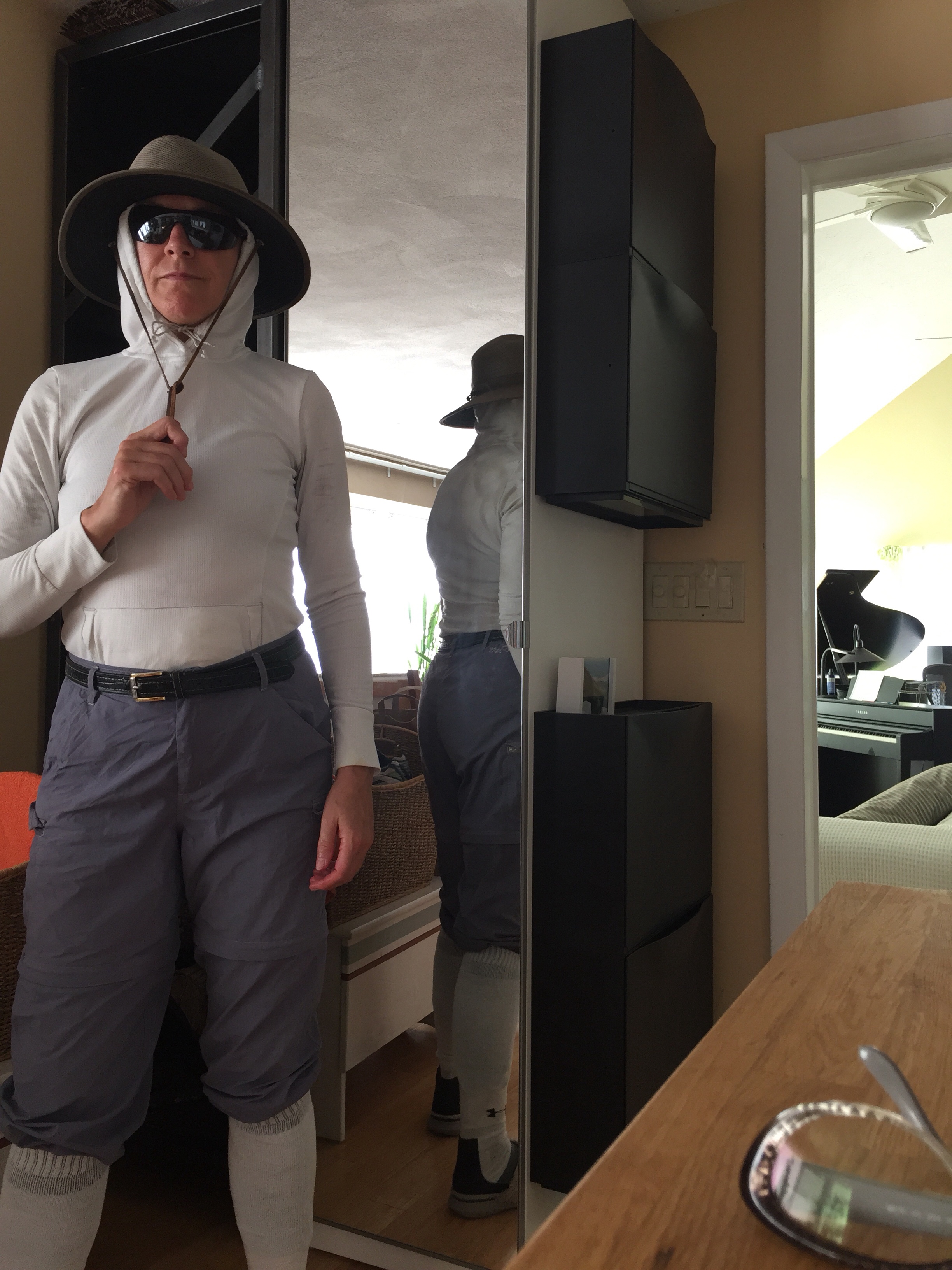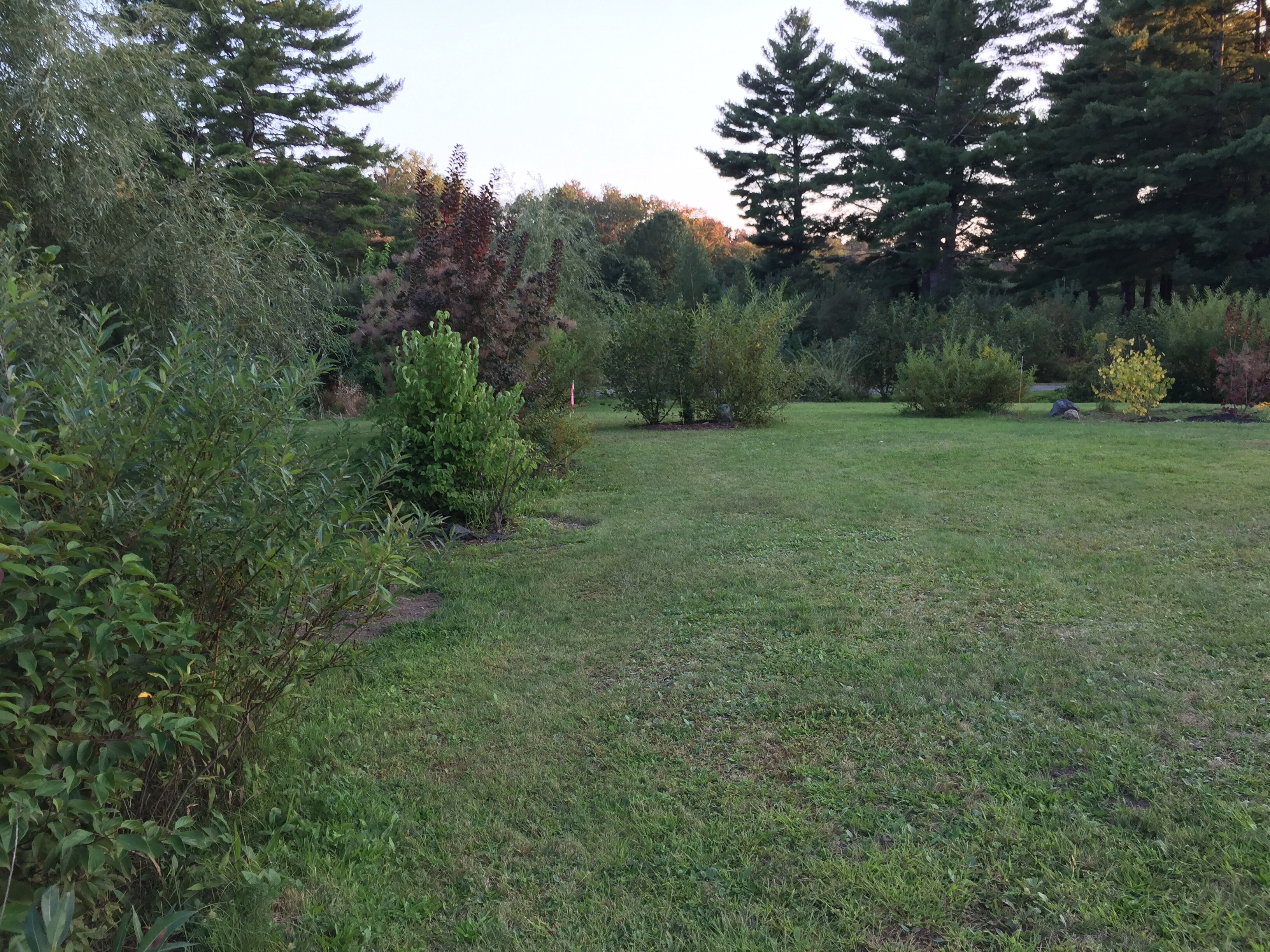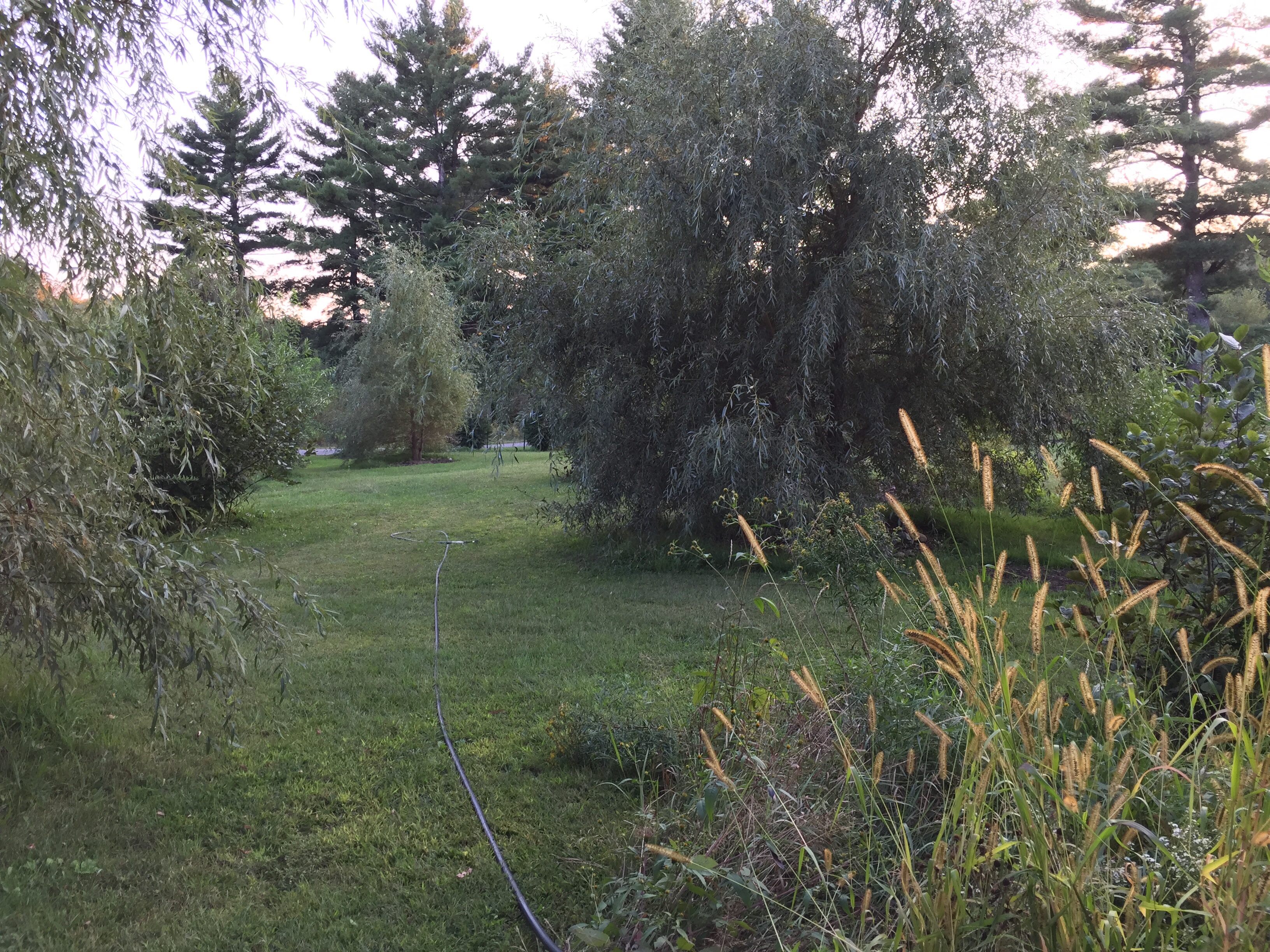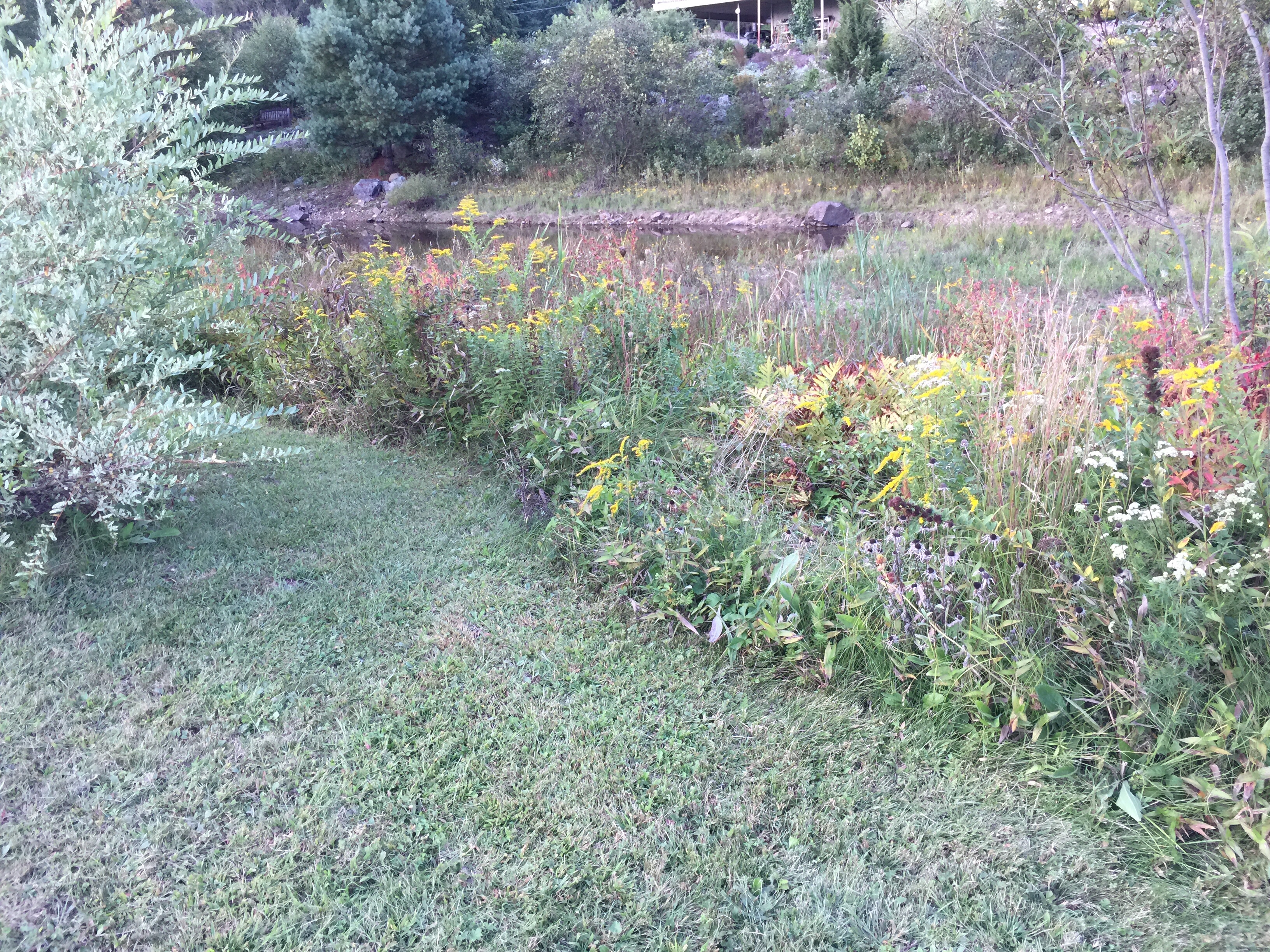Native milkweed, goldenrod and rudbeckia seeds were gathered and used to start the new “Milkweed River.”

Native milkweed, goldenrod and rudbeckia seeds were gathered and used to start the new “Milkweed River.”

A strict “tick protocol” is followed here. A tied hoody is tucked into belted pants. Long, thick white socks are pulled up over pant legs. Hat, boots and eye protection complete the outfit (and often knee pads, too). Clean, absorbent liner gloves are followed by more protective and/or waterproof gloves. Clothing is white, made of athletic wear fabric that ticks and bugs slide off of rather than get caught in. The fabric is also wicking and cooler when it’s hot out.
Afterward, boots are removed outside. Gloves are removed without touching their outsides. Everything gets brushed off, then we make a beeline for the washing machine, where layers are carefully peeled off in reverse order, just in case there might be a tick somewhere. Clothes go right into the sanitary cycle of the wash. Showering immediately follows, with a fine-toothed comb run through the hair. Sometimes, there is a “tick check” made afterward by an independent observer (a.k.a. spouse).

This is still in the “east” corridor, slightly west of the last photo, below. Some of the shrubs here include Cornus amomum (silky dogwood), Hammamelis virginiana (witch hazel), Viburnum dentatum (arrowwood) and Cephalanthus occidentalis (button bush). We also propagated some willows, dogwoods and alders that were already growing on the property. Just about everything is native, except for the purple smokebush.

It was just a large field before, full of invasives. We needed quick cover, so in 2012 we planted Salix babylonica (weeping willow). This area is very wet in the spring. Now, some of the shrubs have had a chance to grow up, including the native Salix nigra (black willow).

Next to the pond is an unmown “buffer” strip. This time of year it presents interesting colors of pollinator-friendly asters, native daisies, grasses, goldenrod, ferns, cattails, Virginia creeper vines that have turned partially red, and myriad others. Hopefully we’ve gotten out a majority of the errant and invasive docks, loosestrife and phragmites.
